Tourists visiting the central part of Egypt today usually have two places marked in their plans:one, for its monuments, is Luxor; another, because it is a beach area of the Red Sea, Hurghada. But halfway between both sites, near the city of Qena, there is a strange corner that may be interesting because it has the peculiarity of having been exploited not by the Egyptians but by the Romans, from the 1st century AD. This is Mons Claudianus, a quarry from which the rare stone used for buildings such as the Pantheon of Agrippa, Diocletian's Palace or Hadrian's Villa, among others, was extracted.
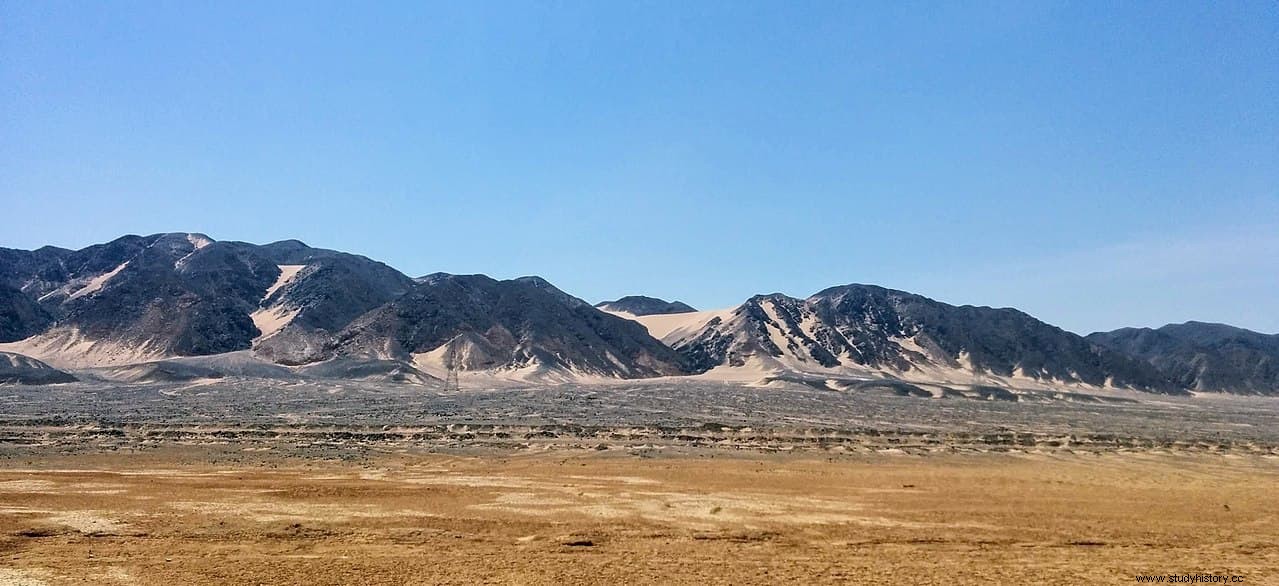
It was the year 1823 when the Englishmen John Gardner Wilkinson and James Burton discovered it. Both are often nicknamed the father of Egyptology because they were pioneers in studying the world of the pharaohs scientifically. It was back in the first quarter of the 19th century, not long after Napoleon's famous expedition to the country of the Nile failed militarily but returned loaded with archaeological wonders that fascinated all of Europe.
Wilkinson spent twelve years in Egypt excavating, drawing, and recording everything he found, before returning twice in his lifetime and leaving for posterity several works that reflect his passage through virtually every Egyptian setting. acquaintances. For his part, Burton focused his activity on the Valley of the Kings, Medinet Habu and Karnak, discovering several important tombs and the Royal List between 1820 and 1834. One and the other met while working for Sir John Soane (a prestigious architect and collector of art and antiques whose house is now the headquarters of the museum that bears his name) and collaborated to excavate Mons Claudianus.
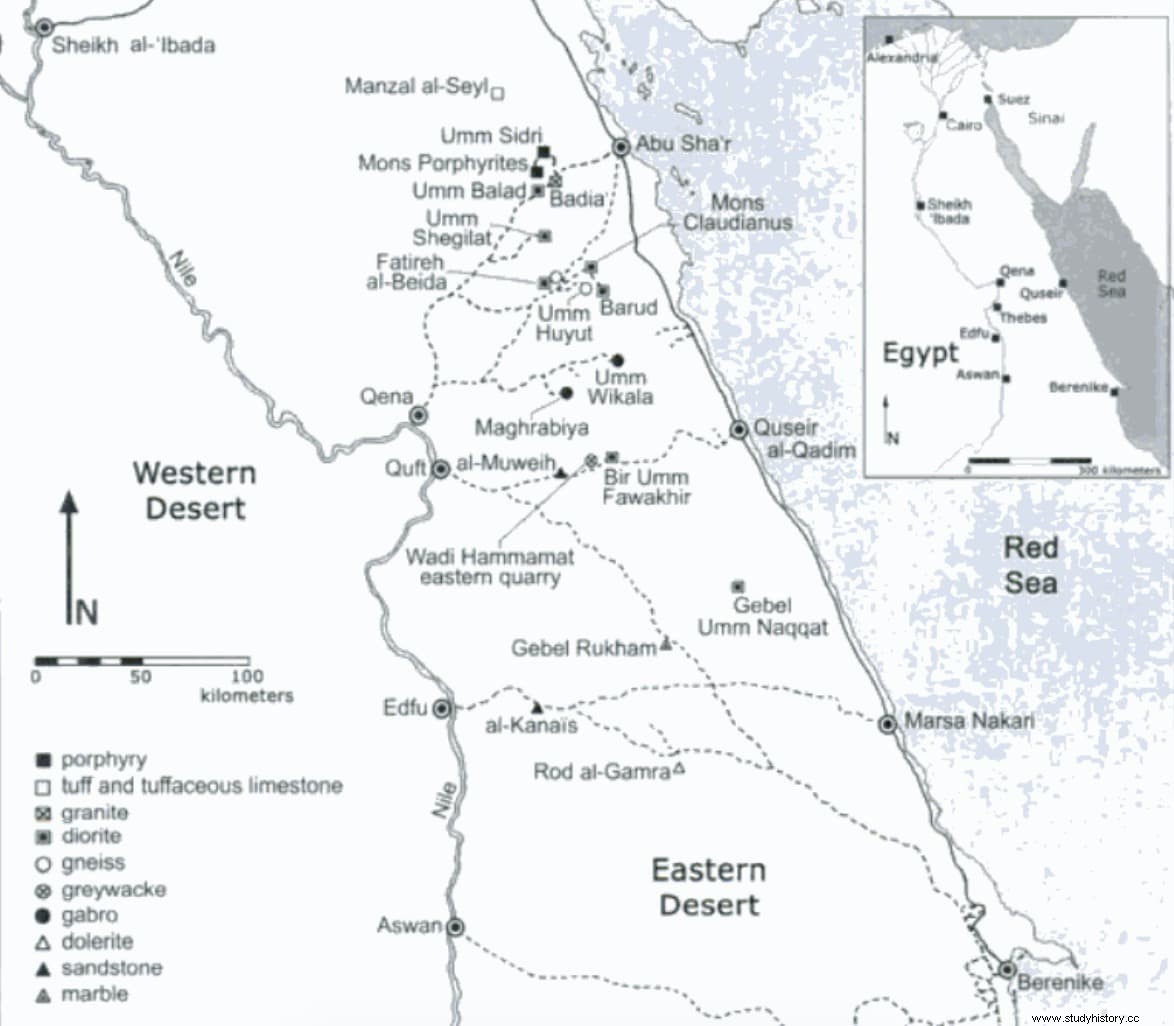
Mons Claudianus is in the Egyptian southeast, in the Itbay region, nestled at an altitude of seven hundred meters in a mountain range called the Red Sea Hills -because the elevations run parallel to the coastline- that separates the coastal plain from the Eastern Desert. One of the characteristics of this orogeny is that it has been used since ancient times as a quarry, also very valuable due to the scarcity of stone suffered by the Egyptians for their constructions, although they used to obtain it more easily in others such as those of Aswan, Edfu, Jebel el-Ahmar, Jebel el-Silsileh, Widan el-Faras, El Amarna, Idahet, etc.
One of these mountains, once called Mons Porphyrites (now Jabal Abu Dukhkhan), was quarried for porphyry; black too, but above all the very expensive red, known as imperial by the Romans because they used it for the sarcophagi of the emperors due to its chromatic similarity with purple (other examples of use would be the sculpture of the four tretarchs in Venice, or the panels of the aforementioned Pantheon) and with the particularity that it was only extracted there.
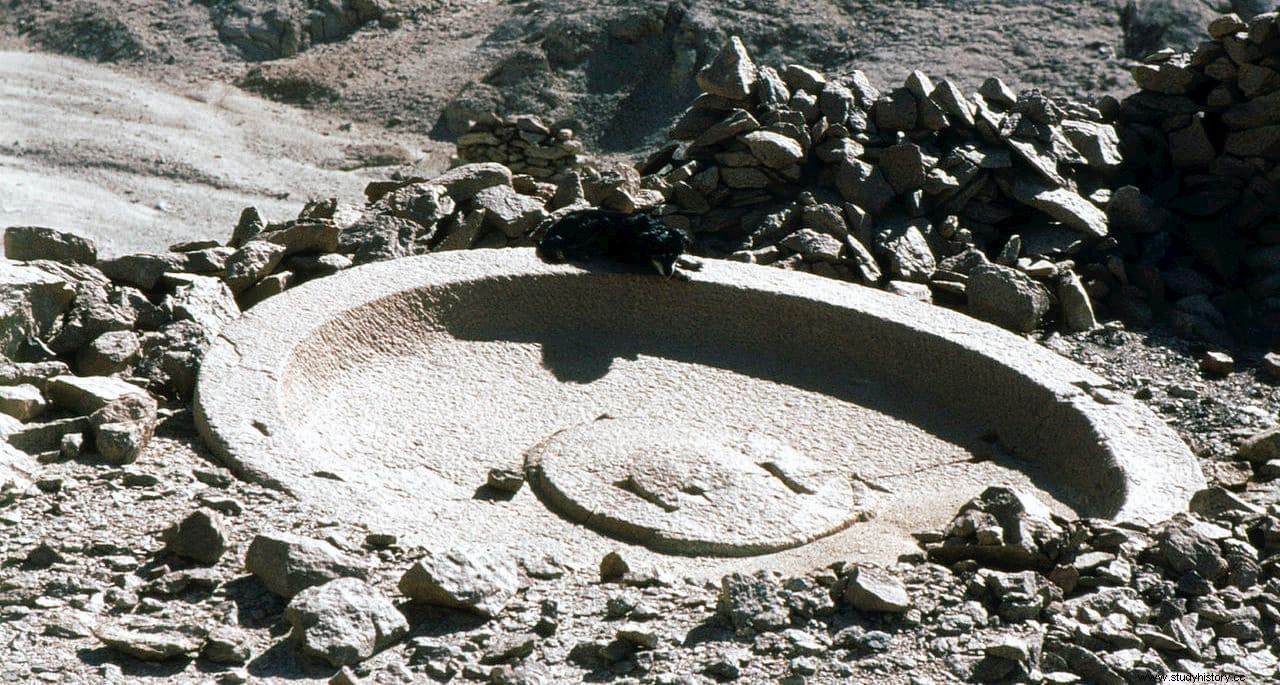
But those were not the only quarries. Separated from each other by a few dozen kilometers there were others, such as Mons Ophiates (Wadi Umm Wikala), Mons Basanites, Umm Balat, Umm Toliat, Tiberiane... All had the common denominator of having been exploited mainly by the Roman Empire between the 1st and 1st centuries. V AD, most of them under the administration of the same procurator metallorum and with the workers' villages protected by a fort erected in what is now Abu Sha'ar.
According to Pliny the Elder in the Natural history of him , were discovered by the legionnaire Cato Comino Leugas in the year 18 AD. And, certainly, the archaeological record (workshops, blacksmith shops, ovens, wells, baths, necropolis, temples, watchtowers...), well preserved thanks to the dry environment, reveals that there were no settlements prior to that date in the vicinity. Instead, the thousands of ostraca found provide us with interesting information about what life was like there.
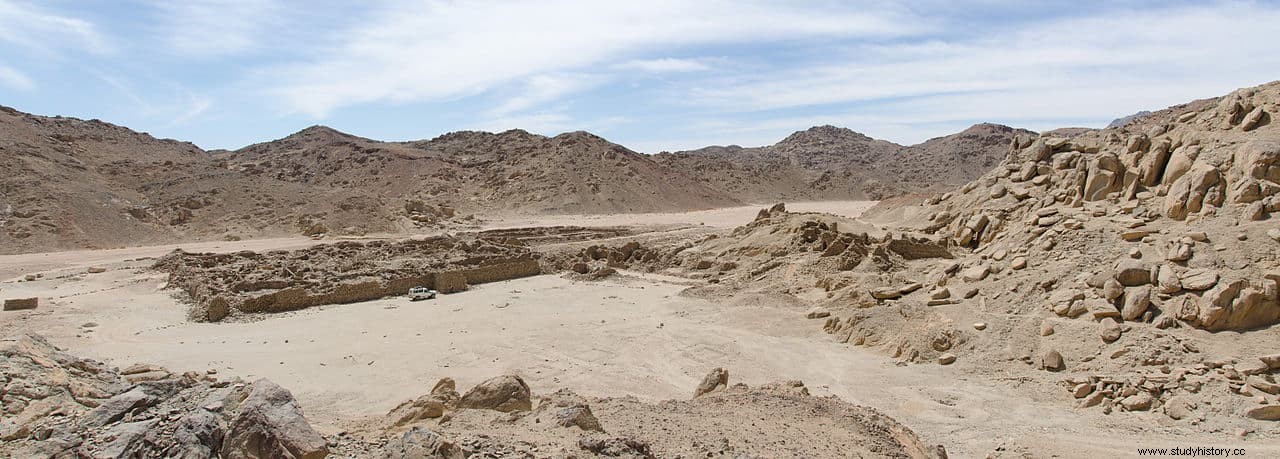
One of the surprises is that the standard of living was above the average for the country, since slaves were not employed but salaried workers, with good pay:up to forty-seven drachmas a month, it is reported, double what they would earn in other Egyptian quarries apart from an individual allotment of wheat. Many were simple peons but there were also qualified ones, who used to reside with their families; and then there were the soldiers obviously, always so linked to economic progress. In total, it is estimated that a thousand people would live in Mons Claudianus.
Likewise, from the inscriptions it can be deduced that their diet was good, abundant in proteins -a lot of fish came from the nearby Red Sea- and vitamins -fruits, vegetables-; the remains of barley suggest that beer was made, there is the presence of aromatic herbs such as basil and mint, and even products imported from Asia, such as pepper or cider. However, most of this was planted and harvested in situ , identifying dozens of different species, both animal and plant.
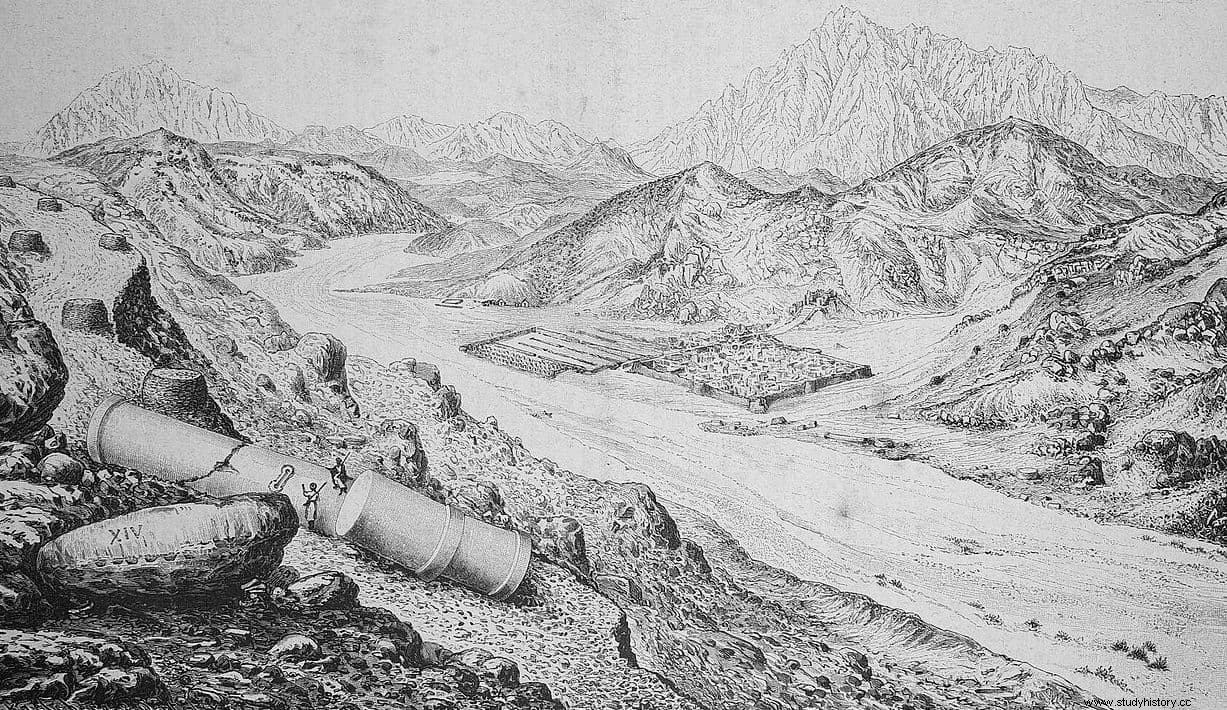
The pack animals (donkeys and camels) completed the panorama of Mons Claudianus, which was a little different from that of Mons Porphyrites (which is fifty kilometers away):if it consisted of five camps spread over nine square kilometers around a central sixth , the other was centralized and defended by a system of walls and towers, several buildings still standing in acceptable condition, especially highlighting the enormous columns -always so photogenic- eighteen meters high and weighing two hundred tons; some were broken during manufacture and left abandoned, such as the Unfinished Obelisk in Aswan.
The type of rock obtained in Mons Claudianus was granodiorite, a plutonic igneous rock (that is, of magmatic origin and slow cooling) with a texture halfway between granite and diorite, hence its name. Today it is used crushed on roads and pavements, but historically it was used above all for Roman architectural monuments, such as those mentioned in the Pantheon (specifically in the colonnade of the façade) or the villa that Hadrian had in Tivoli, since the Egyptians preferred to build with sandstone and limestone. This meant that it was more or less ignored until the Ptolemaic era, to which the most famous work in this material corresponds:the Rosetta Stone (196 BC).
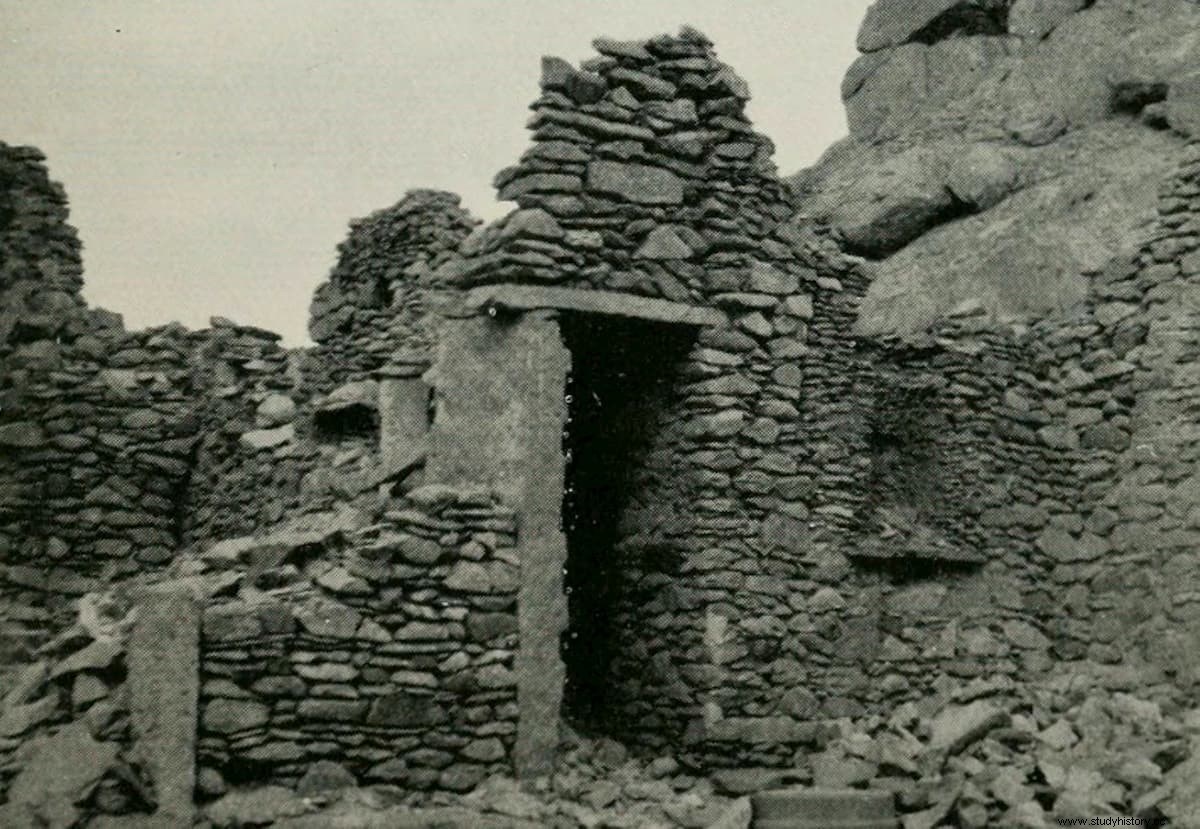
As for the work itself, the extracted blocks were taken to the Nile to be loaded onto barges and sent by river to the Mediterranean, from where they departed for the port of Ostia and went up the Tiber to Rome. Depending on their size and weight, they could be dragged to the wharf on huge wooden skids or on carts that had between four and twelve wheels (according to the requests for shipment of new axles, which had to be battered in each operation); The thing was facilitated by a connecting road between the quarry and the river, deliberately built downhill.
Given that the journey was about a hundred kilometers and that it was done very slowly to avoid accidents, a series of intermediate stations were located along this road that allowed workers and animals to rest. They had lodgings to spend the night and eat, since they were assigned a regular supply of food. All this was carried out in spring, when the level of the Nile was higher due to the annual floods and sufficient flow was guaranteed. Egypt was thus something more than the granary of Rome; also the quarry, at least for some things.
